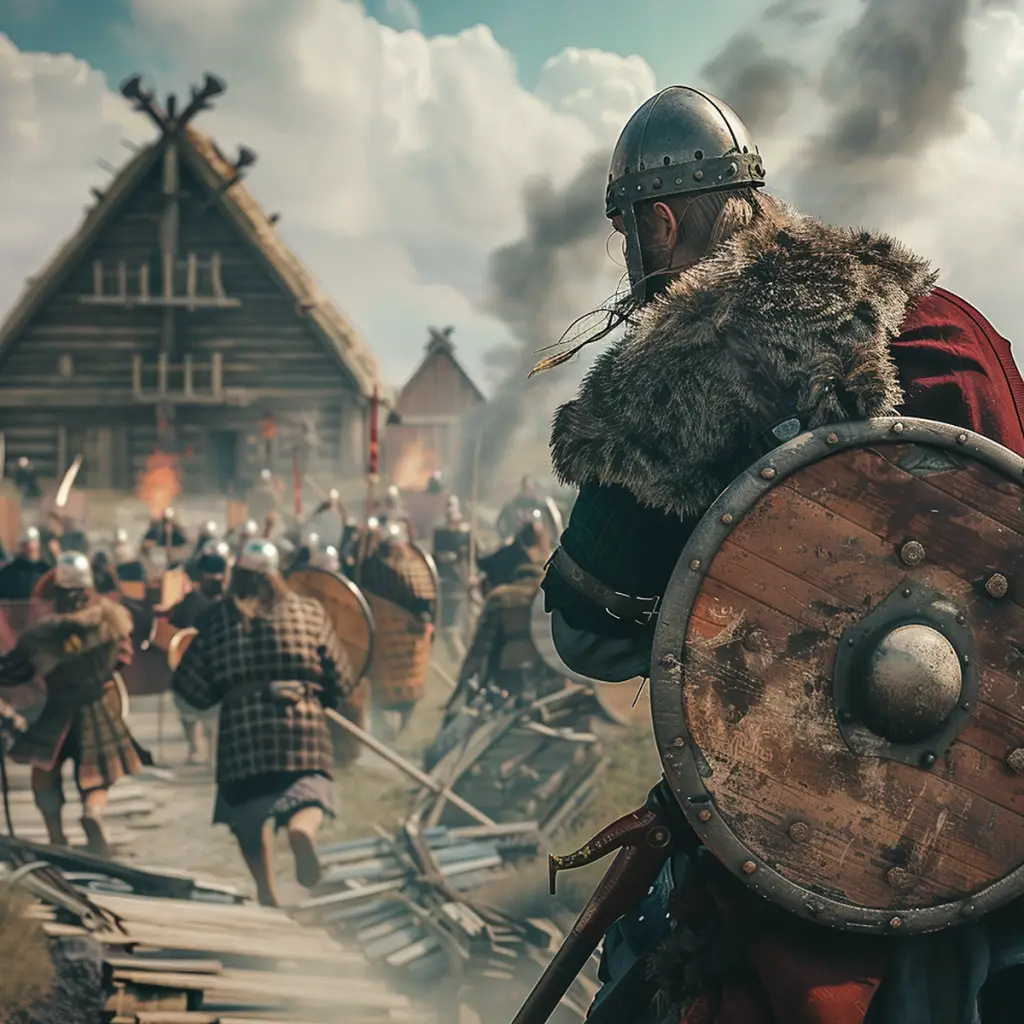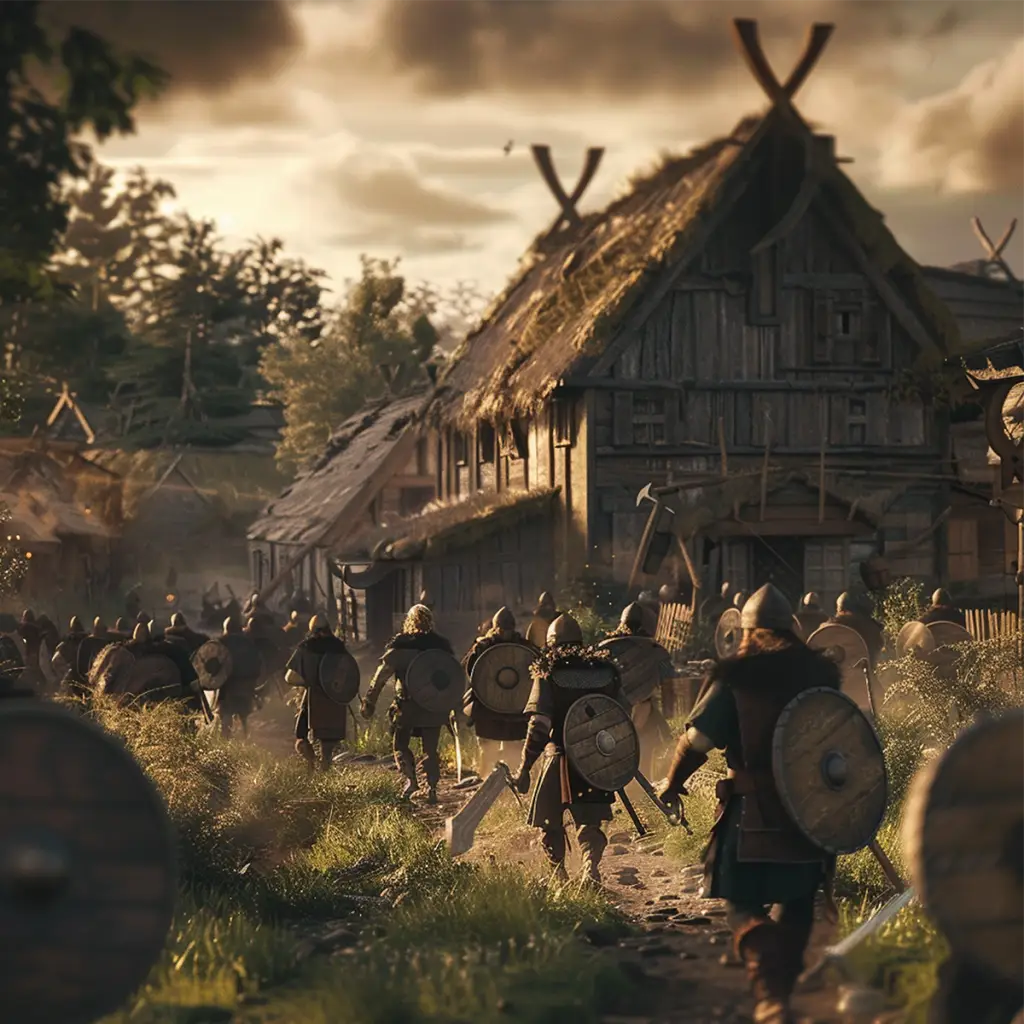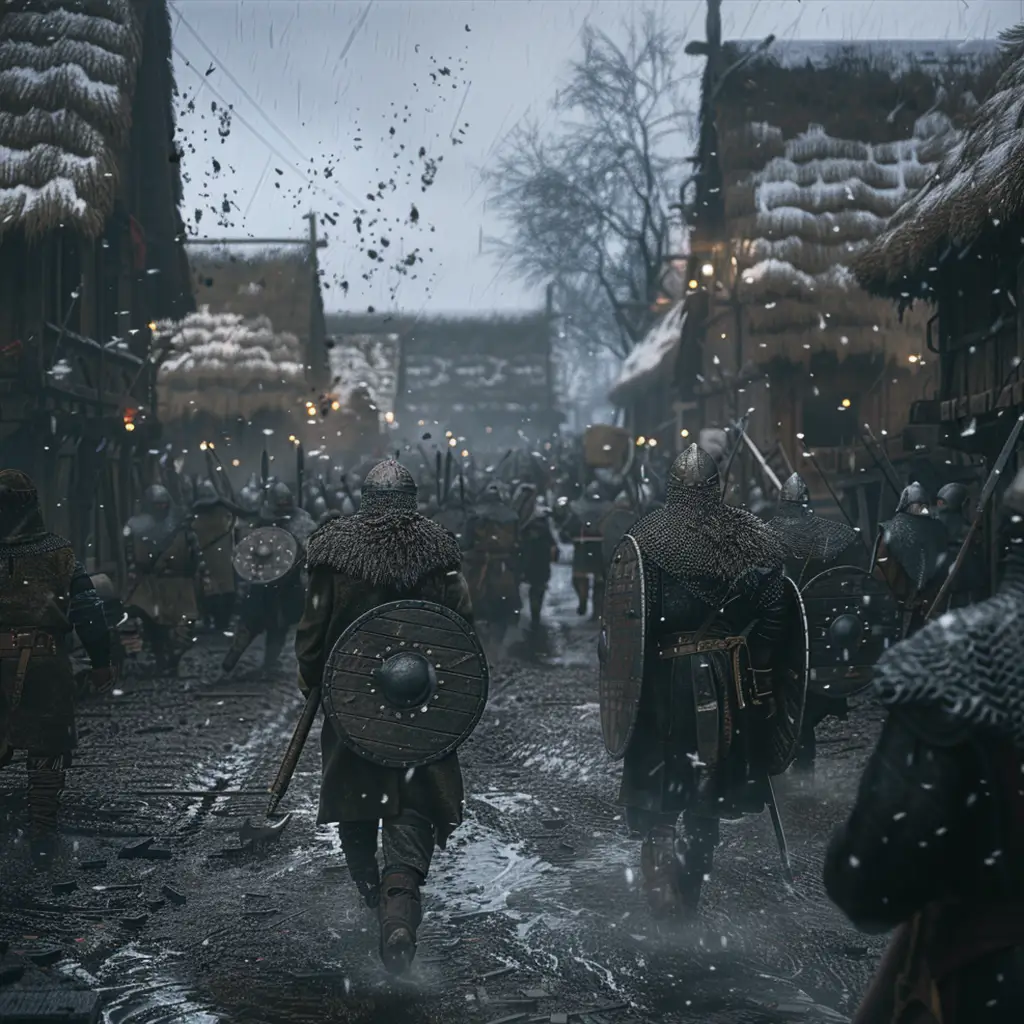Viking tactics in warfare were characterized by their agility, adaptability, and ferocity. Here’s a casual rundown of some key aspects:
Hit-and-Run Raids: Vikings were known for their lightning-fast raids on coastal villages and monasteries. They would strike swiftly, pillage valuables, and retreat before larger forces could respond.
Mobility: Viking longships were crucial to their success. These sleek, shallow-draft vessels allowed them to navigate rivers and coastal areas, enabling surprise attacks and quick getaways.
Shield Wall: In open battles, Vikings often formed shield walls for defence. These formations provided protection and allowed for coordinated attacks against enemy lines.
Berserker Rage: While not universal among Vikings, berserkers were fierce warriors who fought with reckless abandon, often entering a trance-like state in battle. Their ferocity could instil fear in enemies and break their morale.
Ambush Tactics: Vikings were skilled at setting traps and ambushes, utilizing the terrain to their advantage. They would lure enemies into unfavourable positions before launching coordinated attacks.
Adaptability: Vikings were not bound by rigid military doctrines. Instead, they adapted their tactics based on the situation, exploiting weaknesses in their opponents’ defences and adjusting their strategies accordingly.
Psychological Warfare: Vikings understood the importance of psychological warfare. They would often employ intimidation tactics, such as loud war cries, to unsettle their foes before engaging in combat.
Siege Warfare: While Vikings were renowned for their hit-and-run raids, they were also capable of laying siege to fortified settlements when necessary. They would use battering rams, siege towers, and other tactics to breach enemy defences.
Overall, Viking tactics were characterized by their flexibility, mobility, and willingness to engage in both swift raids and pitched battles, making them a formidable force in medieval warfare.



